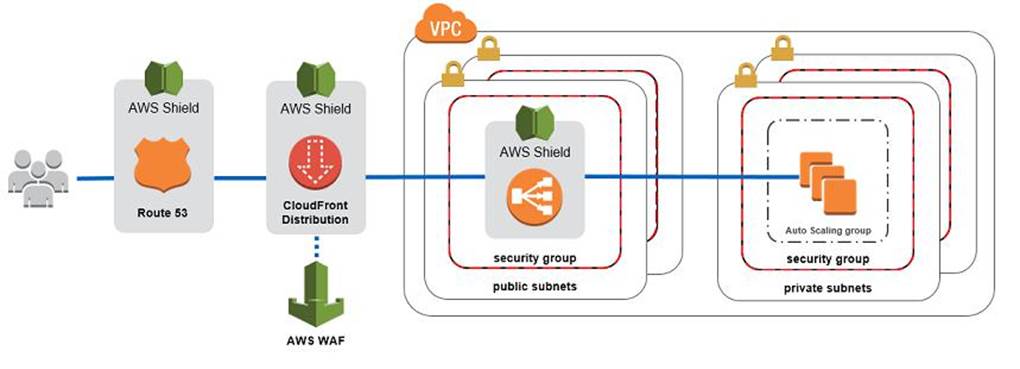Which of the following is the most suitable solution to mitigate these kinds of attacks?
A Solutions Architect identified a series of DDoS attacks while monitoring the VPC. The Architect needs to fortify the current cloud infrastructure to protect the data of the clients.
Which of the following is the most suitable solution to mitigate these kinds of attacks?
A . A combination of Security Groups and Network Access Control Lists to only allow authorized traffic to access your VP
C . Using the AWS Firewall Manager, set up a security layer that will prevent SYN floods, UDP reflection attacks, and other DDoS attacks.
D . Set up a web application firewall using AWS WAF to filter, monitor, and block HTTP traffic.
E . Use AWS Shield Advanced to detect and mitigate DDoS attacks.
Answer: D
Explanation:
For higher levels of protection against attacks targeting your applications running on Amazon Elastic Compute Cloud (EC2), Elastic Load Balancing(ELB), Amazon CloudFront, and Amazon Route 53 resources, you can subscribe to AWS Shield Advanced. In addition to the network and transport layer protections that come with Standard, AWS Shield Advanced provides additional detection and mitigation against large and sophisticated DDoS attacks, near real-time visibility into attacks, and integration with AWS WAF, a web application firewall.

AWS Shield Advanced also gives you 24×7 access to the AWS DDoS Response Team (DRT) and protection against DDoS related spikes in your Amazon Elastic Compute Cloud (EC2), Elastic Load Balancing(ELB), Amazon CloudFront, and Amazon Route 53 charges.
Hence, the correct answer is: Use AWS Shield Advanced to detect and mitigate DDoS attacks.
The option that says: Using the AWS Firewall Manager, set up a security layer that will prevent SYN floods, UDP reflection attacks and other DDoS attacks is incorrect because AWS Firewall Manager is mainly used to simplify your AWS WAF administration and maintenance tasks across multiple accounts and resources. It does not protect your VPC against DDoS attacks.
The option that says: Set up a web application firewall using AWS WAF to filter, monitor, and block HTTP traffic is incorrect. Even though AWS WAF can help you block common attack patterns to your VPC such as SQL injection or cross-site scripting, this is still not enough to withstand DDoS attacks. It is better to use AWS Shield in this scenario.
The option that says: A combination of Security Groups and Network Access Control Lists to only allow authorized traffic to access your VPC is incorrect. Although using a combination of Security Groups and NACLs are valid to provide security to your VPC, this is not enough to mitigate a DDoS attack. You should use AWS Shield for better security protection. References:
https://d1.awsstatic.com/whitepapers/Security/DDoS_White_Paper.pdf https://aws.amazon.com/shield/
Check out this AWS Shield Cheat Sheet:
https://tutorialsdojo.com/aws-shield/
AWS Security Services Overview – WAF, Shield, CloudHSM, KMS:
https://youtu.be/-1S-RdeAmMo
Latest SAA-C03 Dumps Valid Version with 400 Q&As
Latest And Valid Q&A | Instant Download | Once Fail, Full Refund

